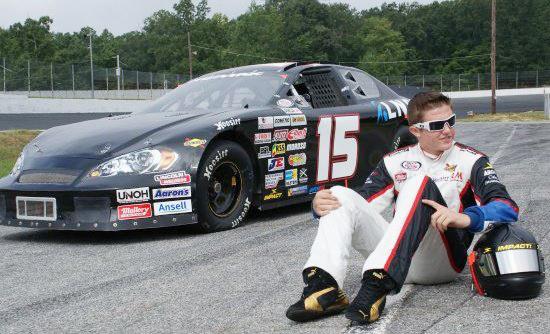 Justin Lloyd, a senior in biological engineering, hopes to compete at the top levels of NASCAR racing, but funding his journey has turned out to be harder than he originally expected." />
Justin Lloyd, a senior in biological engineering, hopes to compete at the top levels of NASCAR racing, but funding his journey has turned out to be harder than he originally expected." />
Photo courtesy of Justin Lloyd
Justin Lloyd, a senior in biological engineering, hopes to compete at the top levels of NASCAR racing, but funding his journey has turned out to be harder than he originally expected.
Although many people like to characterize the sport as just “going to the left,” NASCAR could be one of the hardest sports to break in to.
Justin Lloyd, a senior in biological engineering at N.C. State, is an aspiring NASCAR driver. Although he began his racing career when he was 5, he is still looking for his big break at age 21.
Lloyd grew up during a time when a slew of talented up-and-coming NASCAR stars were also climbing the ranks. Through the years he’s raced alongside NASCAR stars like Austin Dillon, Ty Dillon, Parker Kligerman, David Ragan and Darrell Wallace Jr., all of whom are currently racing in one of NASCAR’s three top series.
Lloyd hopes to one day follow in their footsteps.
“If I was to make it, let’s say, to top-level NASCAR some day, I would take a $30,000 salary, live in a college apartment the rest of my life and have no regrets about it whatsoever, as long as I could race in a competitive car every Sunday,” Lloyd said.
Lloyd has won a lot of races, including the first feature event he ever raced in when he was five 5 years old.
He then spent the weekends of his youth traveling the country, trying to reach his dream. In one of those years, Lloyd said he raced in nearly 400 heats and feature events.
“I think it was 44 weeks out of the year we raced,” Lloyd said.
In 2008, he won 10 out of 20 races at Concord Motorsports Park, just outside of Charlotte, N.C., on the way to a series championship.
Unfortunately, despite his quick and early success, Lloyd has recently struggled to find funding to continue onward with his dream.
Racing is an expensive sport. Even racing a quarter-midget car—the small, almost go-kart-like vehicles Lloyd raced as a child—can cost up to $15,000—and that’s just for the chassis and engine.
Unfortunately, the cost only goes up from there.
According to businessinsider.com, it costs anywhere from $5 million to $35 million a year to be the primary sponsor of a car in the NASCAR Sprint Cup Series, the premier series in the sport.
Despite these financial issues, a 17-year-old Lloyd did get a chance to race in the Automobile Racing Club of America racing series, a series many of the sport’s top drivers have worked their way through. He said he was blown away by the tracks and by the racecars, which produce more than 800 horsepower.
“I remember that track [Berlin Raceway in Michigan] was not like anything I had ever experienced before,” Lloyd said. “I see this car, its right-rear catches the dirt. It goes straight off the track into the tires—his car goes flying above the height of the scoreboard, which is about 15 feet [tall].”
Lloyd said he wasn’t scared, but simply in awe of it all.
Unfortunately, due to his lack of funding, Lloyd could only afford to run a limited schedule and was eventually forced to take a two-year hiatus from the sport.
“Those two years were really kind of dark for me,” Lloyd said.
The cost of racing has been a hot topic of conversation for people involved with the sport recently, as many are concerned that money is becoming more important than driver talent.
In a recent Youtube video, longtime Charlotte Motor Speedway President and General Manager Humpy Wheeler, expressed his concerns.
“A lot of people just can’t afford to put a steering wheel in their hands, and it’s terrible,” Wheeler said.
Wheeler said that if racing had always been as expensive as it is today, many of the greatest racecar drivers of all-time might not have made it in the sport.
“These cars have gotten too expensive down on the grass-roots level,” Wheeler said. “We’re not getting all of the best drivers. I hate to say that.”
Lloyd agrees that it’s a problem, but he doesn’t know what to do about it.
“Honestly, I don’t even know what needs to be changed or fixed, I don’t even know,” Lloyd said. “That’s what I fought with for two years right there.”
Lloyd and his family have sacrificed a lot. His brother actually had to quit racing so there would be enough money for Lloyd to continue. He said the sacrifice hasn’t been forgotten; it fuels his drive to continue.
As he continues his college career at N.C. State, Lloyd is still racing. He has had the opportunity to race the last two weekends and is still trying to get a group of sponsors together for the future.
“I go fast for a living,” Lloyd said. “I love everything about it, the good and the bad.”